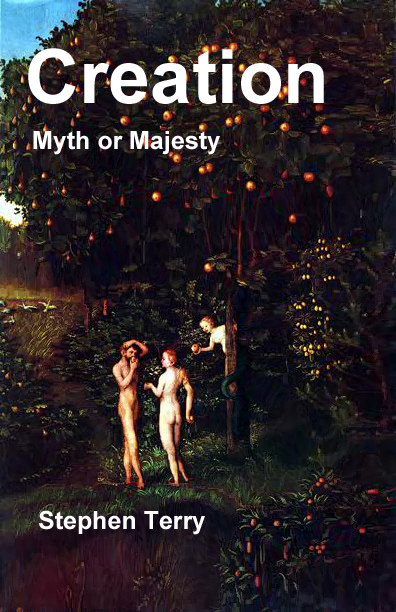
Stephen
Terry, Director

Church
Organization and Unity
Commentary
for the December 22, 2018 Sabbath School Lesson
 “Jesus called them
together and said, ‘You know that the rulers of the Gentiles lord it over them,
and their high officials exercise authority over them. Not so with you.
Instead, whoever wants to become great among you must be your servant, and
whoever wants to be first must be your slave—just as the Son of Man did not
come to be served, but to serve, and to give his life as a ransom for many.’” Matthew
20:25-28, NIV
“Jesus called them
together and said, ‘You know that the rulers of the Gentiles lord it over them,
and their high officials exercise authority over them. Not so with you.
Instead, whoever wants to become great among you must be your servant, and
whoever wants to be first must be your slave—just as the Son of Man did not
come to be served, but to serve, and to give his life as a ransom for many.’” Matthew
20:25-28, NIV
On March 29, 1982, Paul McCartney, the former Beatles
bassist and singer released the song “Ebony and Ivory.” The chorus repeated the
words “Ebony and ivory/Live together in perfect harmony/Side by side on my
piano keyboard/Oh lord, why don't we?” Perhaps overbroad in its simplicity, it
nonetheless touched the hearts of many, and since he sang it as a duet with
Stevie Wonder the message of racial harmony was plain to most. Today, over thirty-six
years later the song still resonates with the message of harmony in spite of
diversity, perhaps because the dream of finding unity in diversity still awaits
realization.
It might be that we feel that some differences are too
great to overlook, so we try to winnow out those irritations that we feel are destroying
the possibility of unity. But if we look more closely at that keyboard that
appears so beautiful in both form and function, some disturbing things begin to
appear. For instance, have you ever played a piece of music and hit the wrong
note? It doesn’t sound too great does it? Most of us who play music never lose
that automatic wince deep inside when then happens. Yet that note that is so
disturbing when played inappropriately is part of that keyboard we get such joy
from. Some are even more upset by the sound of an augmented 4th
known as a tritone. This is the sound made by many emergency vehicle sirens
because it is jarring enough that it is hard to ignore. To hear the sound on
your musical instrument of choice simply play F followed by B. This interval
became known in the past as the Devil’s Chord and was banned by the church for
centuries because of the feeling it created. It features prominently in the 1969
song “Black Sabbath” by the band of the same name on the album of the same
name. The band’s attempt to capitalize on the inferred demonic character of the
notes resulted in a huge hit for them, perhaps causing to link some music forever to the idea
that there is something demonic about Rock and Roll in general and Heavy Metal
in particular. But here again, this interval is part of that same keyboard that
appears so beautiful when considered as a whole. How can it be that such a unified,
even uniform appearance can be composed of such disparities? How does one coax harmonious
unity from notes that simply do not play well together? Does it come from the
notes themselves? Are they able to achieve a tonal perfection that produces
automatic unity?
I think most understand that the piano does not have
life of itself to produce the melodies it does. The life comes from the living
musician sitting at the keyboard, and in a sense, infusing it with their own
life. Striking the keys produces sound and the energy transmitted to those
keys, through a process of hammering on wire vibrates the air and sends sound
waves through that air to the ear of the musician and anyone else within
listening range. The tones can be combined in various combinations to produce
bold themes with major chords, romantic or otherwise emotional themes with
minor chords, and even, as previously mentioned, dark themes as in the case of “Black
Sabbath.” Composers and song writers dedicate their efforts to teasing out
those themes for the musicians to play. No matter what theme or genre one
wishes to invoke, the repertoire of sheet music available is vast. However, when
choosing what to play, we all have our preferences, and because of that our
skill set can become severely limited and we can lose sight of the full
potential of our instrument. In this regard, Black Sabbath, the band, did us a
service in reminding us of how much potential often remains untapped even within
the limited confines of the eighty-eight keys of a piano.
Perhaps now we can see the allegory developing here. It is a complex one for we
can identify with various aspects of the parable. We can see ourselves as the
keys of the keyboard. When we consider the difference between black and white
keys, the obvious message is one of racial diversity between blacks and whites
as McCartney’s song addressed. We may also find an obvious example of such bi-polar
diversity in a mono-racial congregation where the divide is by gender, rather
than by race. But the problem with such divisions is that they are almost
always wrong. We can see this by returning to the piano. While the keys are
either black or white, but the appearance of uniformity by color is deceptive.
When we actually strike the keys, we discover that far from being uniform,
every black key is different from every other black key, and the same is also
true of the white keys. It is that difference that allows the harmonies to
occur. Without it, we could not have the fundamental chord triads and all of
their various permutations. Understanding all of this and how it interacts can
seem like second nature to a skilled musician, and some musicians are skilled
enough to compose and improvise wonderful pieces, knowing that they can rely on
this diversity to produce the response they are seeking.
Musicians and composers both also rely on an
understanding of music theory that not only recognizes all that diversity but
provides guidance in how to bring that diversity together harmoniously. When one
begins to learn how to tease melodies from their instrument, they are limited
to the written music they can read and play. With time, as they learn more
theory, either formally or by experimentation, they gradually free themselves
more and more from needing to play only previously composed music, and can
develop the ability to produce wonderful harmonies on the fly. This is the principle
behind Jazz. Even with written music, they begin to understand what the
composer was going for and embellish it with improvisations that take it further
along that path than it may have gone on its own. The key to this level of
playing though is not to force what they want from the music, but to let the
music flow freely as it tells a story.
Perhaps now it can be seen that while we may be the keys
and glorious in our diversity, we may also, as musicians in service to those
keys, coax from them a melodious response that overwhelms the diversity of
their construction with harmonious unity that graces the world with beauty.
Guided by musical theory, we can understand how to approach each key to its
greatest advantage and help it to be a part of the composition. In a sense, the
musician has the “keys of the kingdom”[i]and is able to set free or bind
the composition. They have the ability to bind the notes to the will of the
composer or to set them free to develop their own wonderful impromptu composition.
The inspiration that enables the musician can infuse the music with its own light
and the common bond of that light can unite those notes and amiably they find
their expression.
But this can only happen if we learn to see unity within
the realm of possibilities, in spite of the diversity, and even animosity, that
may cloud our perception at the moment. We also must understand that service is
the method by which we may accomplish the realization of such a lofty vision. It
cannot be accomplished by brute force. Hammering on a key that produces a note
we do not want or like only makes the note sound louder. It does not make it
stop unless it finally breaks. When that happens, the entire keyboard and all
the music it produces are diminished. As a result the musician also suffers as
they are no longer capable of producing a full realization of what music theory
says should be possible.
All the notes want, their entire purpose, is to be a
part of the song. When the musician leads them each to that end, when they are
enabled to be all that they were created to be, then the musician finds
fulfillment of their purpose as well. In fact, for every Christian leader who
enables the ministry of every Christian to the greatest extent possible, the
same fulfillment of purpose will happen. And equally, every Christian leader,
who hinders the full realization of their flock’s individual potential in service
to God, is sowing the seeds of their own failure to achieve all that God has
called them to do. What a sad melody that would be.
